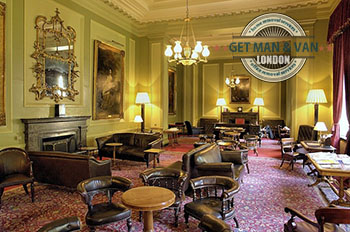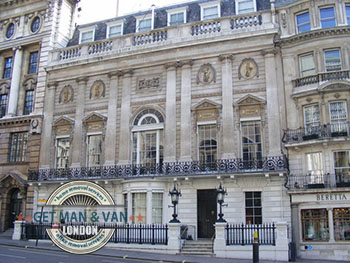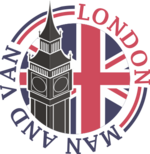London Gentlemen’s Clubs You’d Want to Be a Member of

The concept of a gentlemen’s club is an idea that may sound a little outdated to some, bearing in mind that we are living in the 21st century. Admit it, however, those institutions encapsulate the romanticism and long-lost understandings of ethics of life and business from a more noble era. The very fact that a great number of London gentlemen’s clubs are still in existence all over the world means that they still serve a purpose in our world. Let’s have a look at some of the most interesting and classy clubs that are still functioning on the territory of London – the birthplace of the concept of such institutions.
- The Alpine Club was established 157 years ago, on 22 December 1857 by mountaineering enthusiasts like E.S. Kennedy and John Ball. The founding members gathered for the first time at the Ashley’s Hotel in London, and were connected by their passion of climbing expeditions in the Alps, hence the name of the club. Today the Alpine Club is based in Shoreditch and recognized as the “senior” mountaineering club in Britain. This club is a part of the rich tapestry of London private members clubs, offering a unique charm to its membership group. Definitely the place to be if your passion is the great outdoors.
- The Army and Navy Club is the finest institution that one can join in case he or she is a member of the British army or navy. Open for both army members and their spouses, the club is a curious mix of the traditional values and the fresh perspectives. Seriously, even to this day there is a great number of clubs, let alone private gentlemen’s clubs for military members, that accept women as full time members. The Army and Navy club was originally under the patronage of the Duke of Wellington when it was founded in 1837, and was mentioned in Charles Dickens’s Dictionary of London.
- Adding to the list of prestigious gentlemen’s clubs, the Royal Automobile Club, founded in 1897, also exudes an aura of exclusivity and tradition, often frequented by existing members from the military and political circles.
- If you are a writer based in London and you are longing for meaningful conversations and exchange of ideas with fellow knights of the pen, then the Author’s Club is definitely the place for you. The club was founded in 1891 and up to this day its members included a constellation of the best writers in British history, including three Poet Laureates – Alfred Austin, John Masefield and John Betjeman. Oscar Wilde, Jerome K. Jerome, H. G. Wells, Graham Greene, Ford Maddox Ford, Arthur Conan Doyle, who was also the longest serving chairman of the club, and many others were proud members of the establishment in the 20th century, and present members include Michael Jacobs, Nicola Monaghan and Amanda Craig. Oh, yes, guest speakers included Émile Zola, Mark Twain, Rudyard Kipling, Frances Hodgson Burnett, Winston Churchill, Bram Stoker, TS Eliot and Clement Attlee. Impressive, right?
- Not far from this literary hub, the Sloane Club, established in late Victorian Britain, offers a serene environment enriched with arts and history, a haven for writers and artists alike.
- Actually, the oldest club in London is named City of London Club. It was established in 1832. In order to become a member, one has to be a businessman, and on top of that occupy a position of a partner or a director of the company for which he is working. The club is based in a beautiful Italian-Paladin building on 19 Old Broad Street. Even if you are not a member you can rent the premises as a venue for a corporate event, a presentation or a meeting. It is all strictly business for the City of London Club.
- Nearby, the City University Club, founded in 1895, echoes a similar ethos, catering to alumni and academicians, emphasizing the importance of education in the world of London clubs.
- The Eccentric Club was founded in 1858. Then it closed down. It was refounded in 1890, then closed down again. So, the 2008 version of the Eccentric Club can be considered to be the youngest gentlemen’s club in London. And the most interesting one to be a member of for sure. In its heyday it attracted politicians, celebrities and writers, a colorful band that ensured club meetings are never boring. Members often gather late at night to enjoy the club’s entertainment, which ranges from live performances to private dances, making it a lively spot among the clubs in London.
- The Portland Club is one of those gentlemen’s clubs that we have already had the chance to mention before, which does not accept women as members. The main reason for gathering of the club members are card games, especially whist and bridge. In this sense, the Portland Club is often referred to as the oldest card-playing club in the world, which is not far away from the truth. The joining fee and existing member recommendations are a testament to its exclusivity.
- Now, our personal favorite on the list – Travelers Club, often called The Pall Mall Club because its headquarters are located on 106 Pall Mall Street in Westminster. The necessary requirement for admission to the club is that the member in question has travelled at a distance of at least 500 miles in any direction from London. The rule has not been changed ever since the establishment of the Travelers Club at the beginning of the 19th Because of the fact it encapsulates the spirit of all that is British, and gathers both eccentric and industrious to genius members with passion for travel, business and exploration, the New York Times called it the quintessential British gentlemen’s club. The club is also known for its Turkish baths, providing a relaxing experience for members after a long journey. The number of prominent members is too high to start enumerating here. It would suffice to say that there is hardly a big time British Traveler who was not on the member list.
 Charles, Prince of Wales, Prince William, Duke of Cambridge, Conrad Black and Tom Stacey have all one thing in common – they are all members of White’s, a political gentlemen’s club, which is one of the most exclusive establishments of its kind in the world. Even though members often demonstrate pretty raffish behavior, the rules and regulations of the White’s are very conservative. Actually that was the reason Prime Minister David Cameron left it in 2008, despite the fact his father used to be a chairman and Cameron himself was a member for 15 years. The reason for the split was the refusal of the club to accept women as members. Only Queen Elizabeth was once allowed to enter the premises of the club in 1991. The White’s is based on St James’s Street and has been so since the end of the 17th century – it is unlikely that any London removal company will ever have to work on its relocation, bearing in mind how deeply rooted in tradition the White’s is.
Charles, Prince of Wales, Prince William, Duke of Cambridge, Conrad Black and Tom Stacey have all one thing in common – they are all members of White’s, a political gentlemen’s club, which is one of the most exclusive establishments of its kind in the world. Even though members often demonstrate pretty raffish behavior, the rules and regulations of the White’s are very conservative. Actually that was the reason Prime Minister David Cameron left it in 2008, despite the fact his father used to be a chairman and Cameron himself was a member for 15 years. The reason for the split was the refusal of the club to accept women as members. Only Queen Elizabeth was once allowed to enter the premises of the club in 1991. The White’s is based on St James’s Street and has been so since the end of the 17th century – it is unlikely that any London removal company will ever have to work on its relocation, bearing in mind how deeply rooted in tradition the White’s is.- Adjacent to White’s is the equally renowned East India Club, originally formed for officers of the East India Company, now a melting pot of history, culture, and business, complete with a swimming pool and bar, where members and their friends can relax and pay homage to its rich heritage.
About author
-

-
Jeremy Oliver
Previously serving as a logistics coordinator, Jeremy's comprehensive understanding of the industry gives him the ability to translate complex procedures into easy-to-understand blog posts. He has a particular knack for tackling the intricacies of London's removals scene, from the congested roadways to the unique challenges of navigating historic neighborhoods. As an authentic Londoner, Jeremy combines practical knowledge with his inherent love for the city, offering readers not only information on man with van removals but also local insights and valuable tips.

